* ESC - закрити вікно пошуку
rome
Visiting Rome in the footsteps of Ukrainian authors
07.05.2024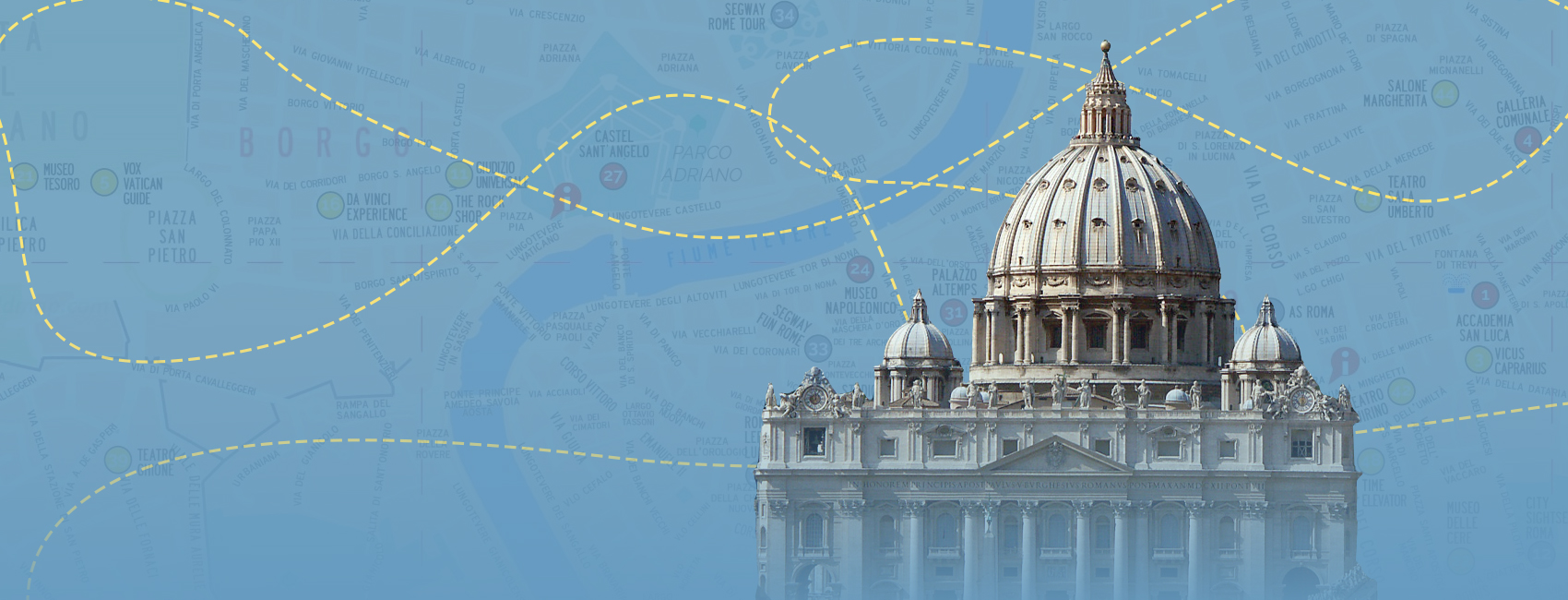
Whether you prefer traveling with friends or going on solo-trips, it’s always convenient to have a cicerone-guide nearby, ready to give you some advice. Even better if it’s someone you know.
Rome is a city where many famous Ukrainians studied, worked, prayed, and relaxed. In their travelogs and epistolaries one can find not only secret tips, but also whole itineraries of how to plan the best vacation in Rome. For example, Mykola Gogol is an expert in cooking pepper and parmesan pasta, Marko Vovchok warns you against climbing the Colosseum’s window, while Ivan Franko tells you how to wander around Rome’s museums penniless. Chytomo studied their experience of vacationing in Rome and created a special travel itinerary to get fully immersed in the atmosphere of the city of marble.
Go through a confession with Vasyl Hryhorovych-Barsky in St. Peter’s Basilica
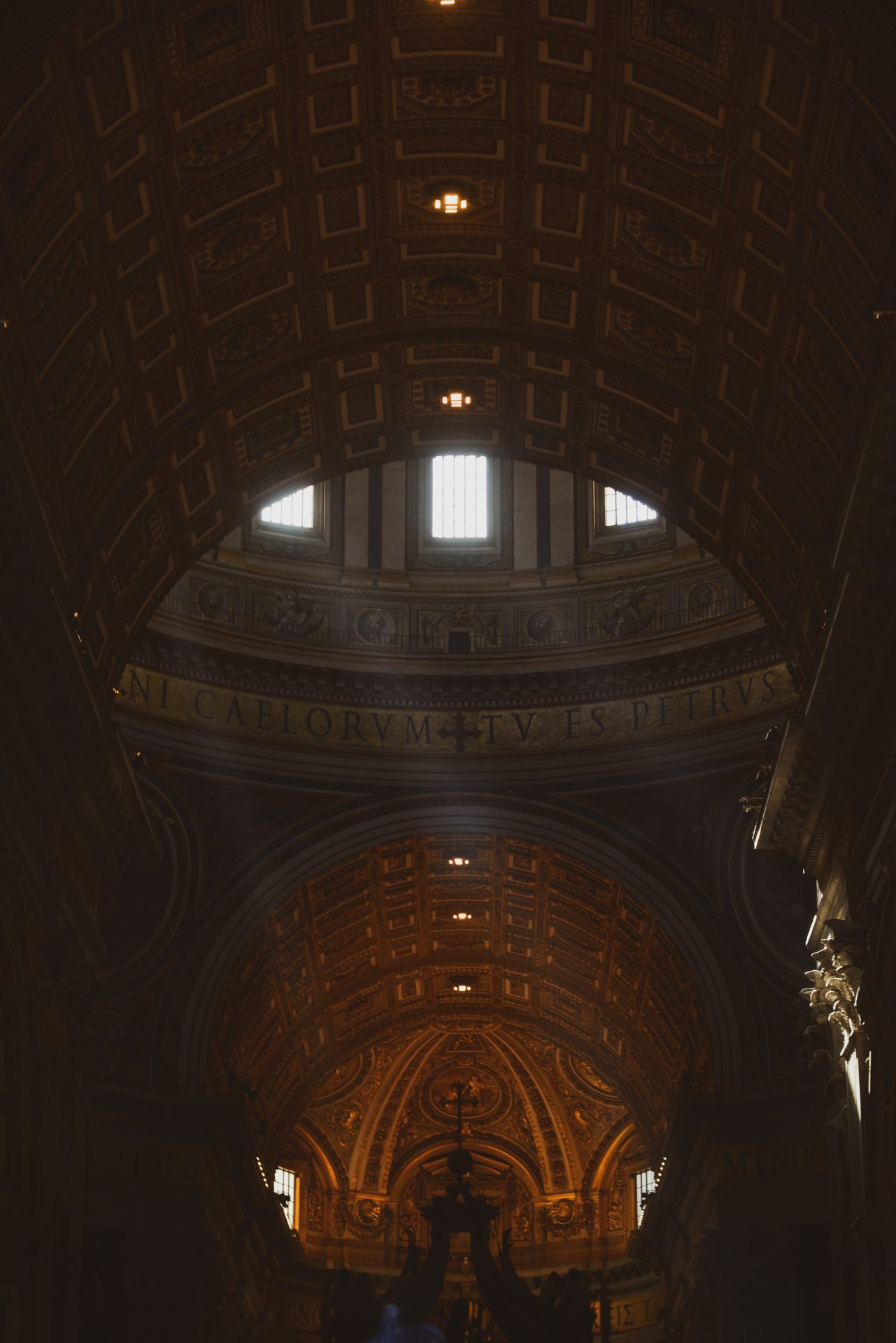
Rome is especially good because every traveler can choose an activity to their liking. Elizabeth Gilbert, a character from “Eat, pray, love,” finds Rome a perfect spot for a food retreat. She eats pasta and pizza, citing Percy Bysshe Shelley’s letter about Italian women having such a free relationship with food that they even eat garlic! Roman cuisine can cleanse oneself even better than the spiritual food. But not every tourist agrees. Vasyl Hryhorovych-Barsky, a Ukrainian philosopher and traveler would put his Roman holiday in the “Pray” part of the book rather than the “Eat” one.
According to the philosopher, the best way to meet Rome is being free from sin. Even if you’re not familiar with the ritual of confessing your sins, just follow his experience. He went to Rome in 1724, but in the eternal city we can trust even the 300-year-old routes, can’t we? Plus, he had a lot of experience: he’d been a pilgrim for 24 years.
The way to Rome for Hryhorovych-Barsky was a pleasant one: he didn’t buy much on the road as he was eating for free in the convents, and the laity, who were harvesting crops at the time, treated him with grapes and figs. Once in the city, he goes to the S. Trinita hospital next to the Holy Trinity Church. There the pilgrims get their feet washed,their wounds tended to with a special healing ointment, and they are treated to a glass of wine. By the way, the traveler strongly advises to dilute the treat with water, if necessary, since Roman wines, especially the white ones, are very strong.
The first holy place he visits after relaxing is the St. Peter’s Basilica. He is most of all impressed by the icon of Peter, frequently kissed by all churchgoers, and the tombs with the relics of the apostles. Clergymen take up numerous thrones in the church, and Vasyl Hryhorovych-Barsky confesses to one of them. This is done to later become one of the 12 confessed pilgrims who attended the Pope’s meal during the vigil before the Feast of the Holy Cross.
Saint Peter’s Basilica is a great place to settle not only personal religious matters, but also those of a national scale. Josyf Slipyj became a Cardinal here in 1965, and asked for the recognition of the Ukrainian Catholic Church.
Sit on the window of the Colosseum with Marko Vovchok and take care of those you love
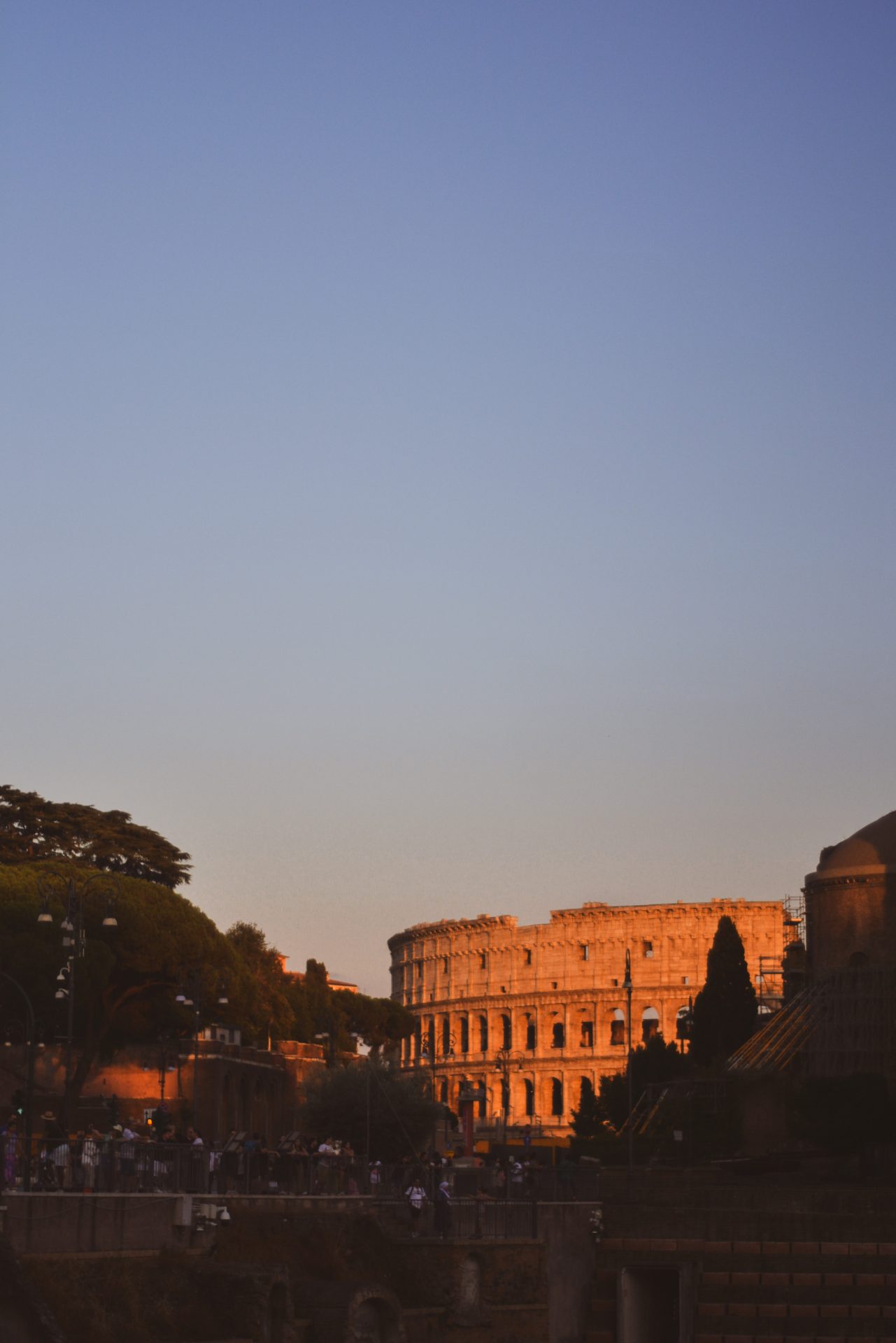
In 1861 Ukrainian writer Mariia Markovych (more known under the pseudonym Marko Vovchok) sat on the Colosseum’s window and later couldn’t recall how she managed to get down from there. She also visited the Vatican, wishing that the sick Taras Shevchenko, whom she knew, was with her. In a letter, she tries to comfort him by attaching a photograph and expresses concerns over the best way to mail it to him.
RELATED: Ukrainian book avant-garde from Delaunay to Ekster
Another great Ukrainian writer Lesya Ukrainka, who was treated in San Remo at the time, also didn’t get a chance to visit Rome. In the letters to her loved ones, she regrets that doctors advised against going on this trip, but notes that she would have gone if she had a suitable companion.
Rome is a city where it’s good to remember your close friends: to think about their well-being, send a card or a souvenir gift. But you should not forget yourself.
For example, Yurii Roslavets, the protagonist of a novel “Regina Pontica” by a Ukrainian writer Yurii Kosach, comes to Rome to find his beloved princess. Throughout the search, he does not deny himself hobbies and pleasures. Overcome by an “archeological febrile”, he visits antique stores and buys a marble bust of Tiberius Graccus. So, when choosing souvenirs for your loved ones, get yourself something too.
Immerse yourself in calm bliss with Mykola Gogol and drink a cup of strong coffee at Antico Caffè Greco
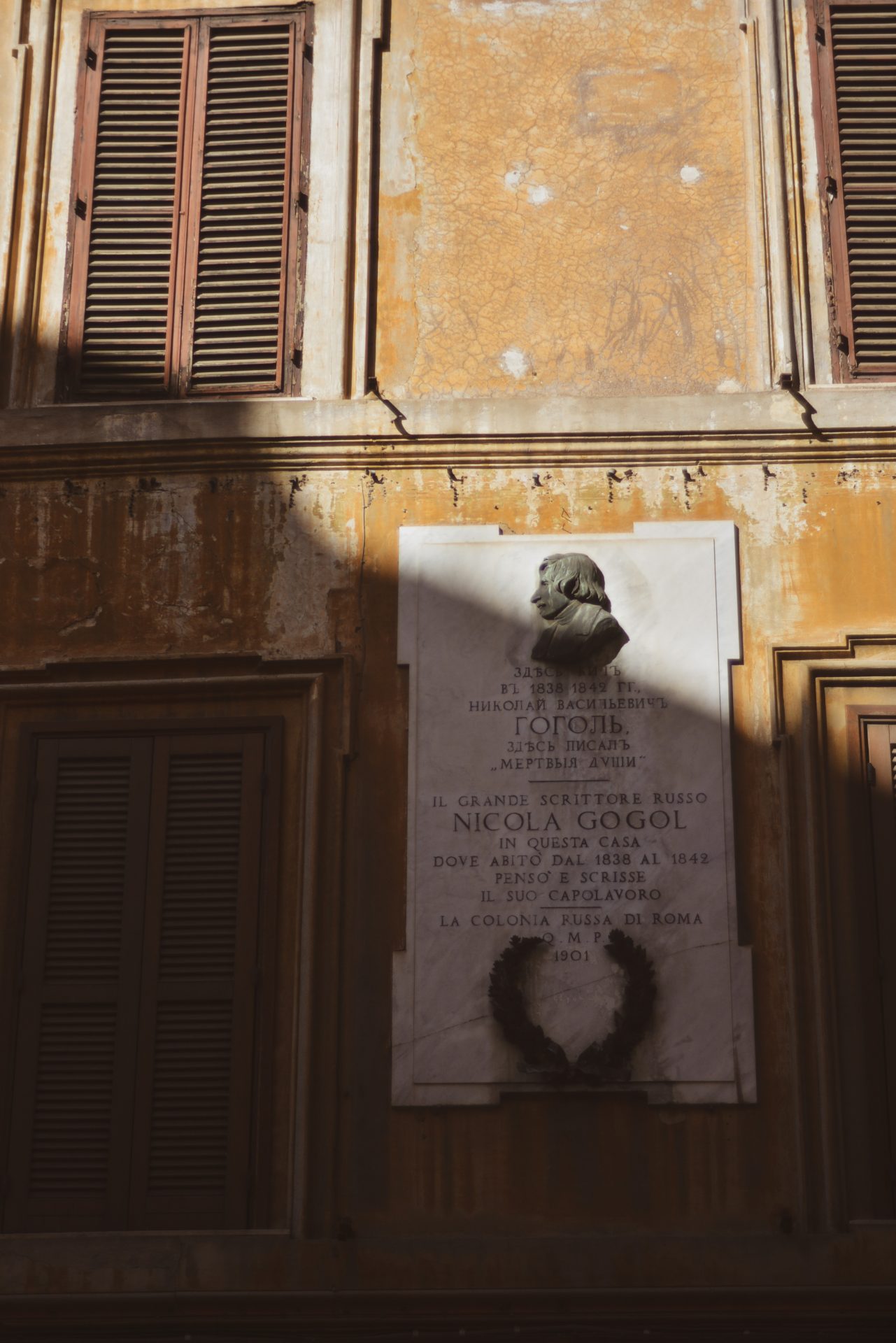
Not adding Gogol to this itinerary would be a crime. Who else knows more about Roman bliss than him, having lived there for almost five years?
If you want to understand Gogol’s fascination with Rome, we suggest you transform yourself into the protagonist of his unfinished novel Annunziata for at least a couple hours. As soon as you pass the city gate of Ponte Molle, you will be immediately embraced by the “beautiful Piazza de Popolo,” and then you can enjoy Monte Pincio “with terraces, stairs, statues and people taking a walk upstairs.” Feel your heart pounding and head further into the city.
To explore Gogol’s “homeland of the soul” you should first stroll around the center of Rome and wander down the narrow street of San Isidoro. Take a closer look at the windows of the house No. 16, where the writer lived: you might be lucky enough to smell the pepper and parmesan pasta he loved to cook. Afterwards, pass by the Museo e La Cripta dei Frati Cappuccini: arguably the most famous Gogol’s address in Rome is next to this crypt, the apartment where he lived for the longest time, from 1838 to 1842. The modern name of this street is Via Sistina. At Gogol’s time, it was symbolically called Strada Felice, or “the road of happiness.”
We are sure that the renaming of the street didn’t affect its ability to generate happiness, so it might be a good idea to take a short walk here and visit the Teatro Sistina, where many of Gogol’s plays were staged.
Coincidentally, he lived in the house next door – No. 125. Today, there is a museum there, though it is run by russians.
However, don’t let this spoil your mood. Take a closer look at the window on the third floor. According to Pavel Annenkov, Gogol always had a Roman lamp burning in the evening instead of candles.

Next, we advise you to head to a place of extreme importance, without which a trip to Rome cannot be complete, one of the oldest establishments in Italy – Antico Café Greco. Imagine how Signor Nicolo drinks strong black coffee here. By the way, the cheapest in the whole neighborhood! The café is a bohemian establishment visited by George Byron, Friedrich Nietzsche, Arthur Schopenhauer, Adam Mickiewicz, Stendhal, Johann Wolfgang von Goethe, and other people from school textbooks.
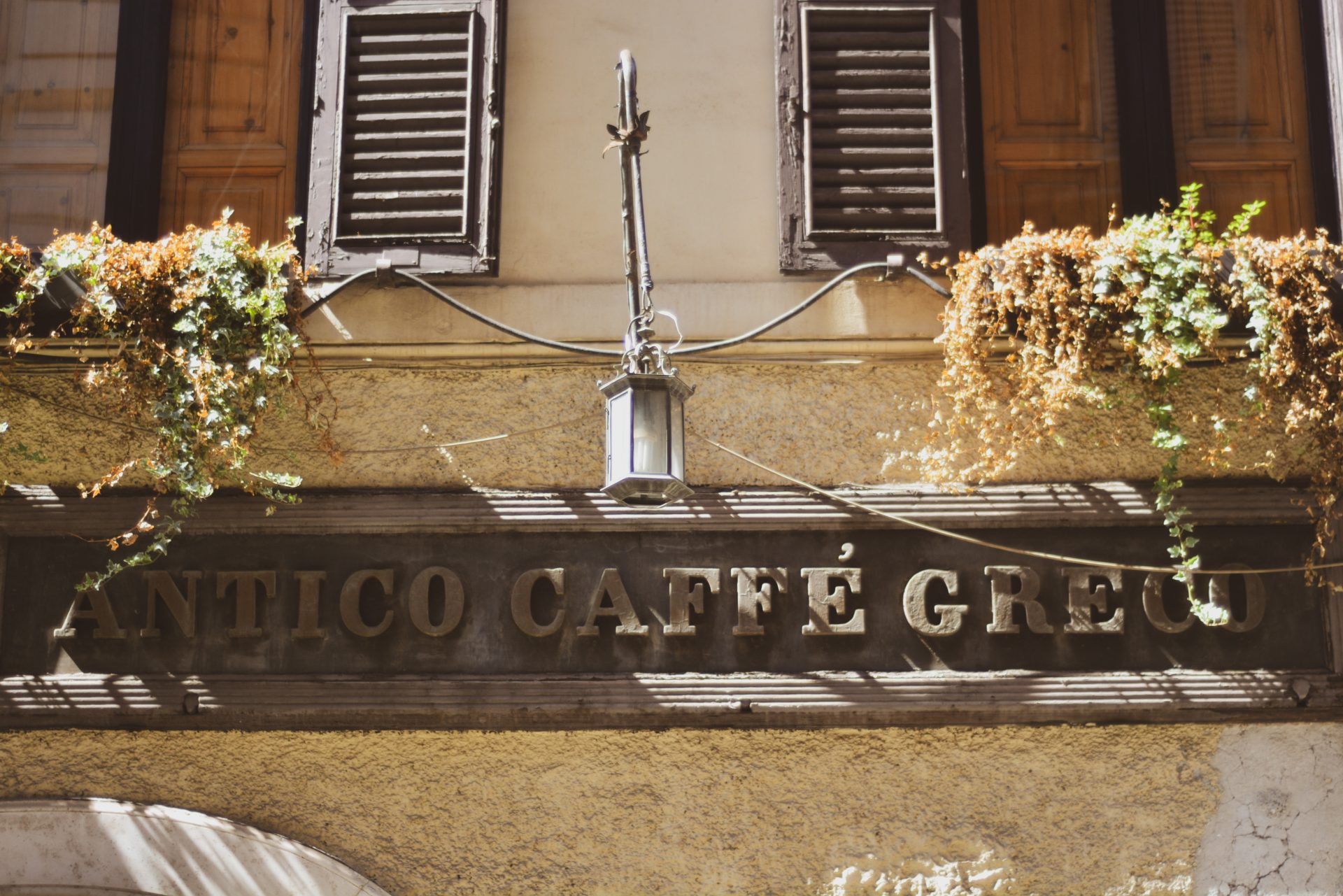
Very near, in the house of Via del Croce, you will find the last Gogol’s address in Rome. He lived in house No. 81 for half a year. There’s neither a plaque nor a museum here, but why would you need them? It’s quite possible to see a short silhouette of a man walking through the eternal city even after almost two hundred years.
RELATED: The best Ukrainian literary classics available in English translations
Finally, you should visit Villa Borghese and stroll along one of the most beautiful parks in Europe. However, you should psychologically prepare to see not only Gogol’s monument but also the one dedicated to Pushkin.
Explore Roman ruins and marble statues with Ivan Franko and Mykhailo Hrushevsky
It’s always good to have an enthusiastic friend who will offer to be an accomplice on your next trip. Thus, the Ukrainian historian Mykhailo Hrushevsky persuaded the writer Ivan Franko to go to Italy for the Easter holidays to calm his nerves among the old Roman stones and bronzes, since, according to him, it was still too cold in Crimea. Franko agreed (even though the trip interfered with his writing and interrupted all the deadlines ). So if you, like Ivan Franko, are wary of impulsive decisions and obsessed with efficient time management, plan everything in advance.
Traveling in a third-class carriage and spending the nights in cheap hotels was not something Franko enjoyed either, as his companion did not deny himself the pleasures of first class and good accommodation.
According to Franko’s daughter, he was mostly impressed by the statue of Moses, perfected by Michelangelo Buonarotti, probably because he recently studied the Holy Scriptures.
Franko left a few references to this trip. The longest travelog, however, is probably the Roman impressions, written in German. In an ironic tone, he talks about two people who, having escaped from the Galician primordial forest, roam around the city of marble with barbaric eyes, drink cheap Frascati wine and empty their wallets.
You should take your time looking at the exhibits, unless you are taken away by the whirlwind of tourists. As a fun exercise you can look at which features the statues have more: Germanic, Slavic or maybe even Finnish.
Like Franko, you can stand in front of the statue of Gaul Ludovisi and contemplate its meaning and the fate of the artist, because in those times the image of the enemy couldn’t have been admired this much. According to the Romans, one could lose beautifully, stubbornly, and bravely only to the gods.
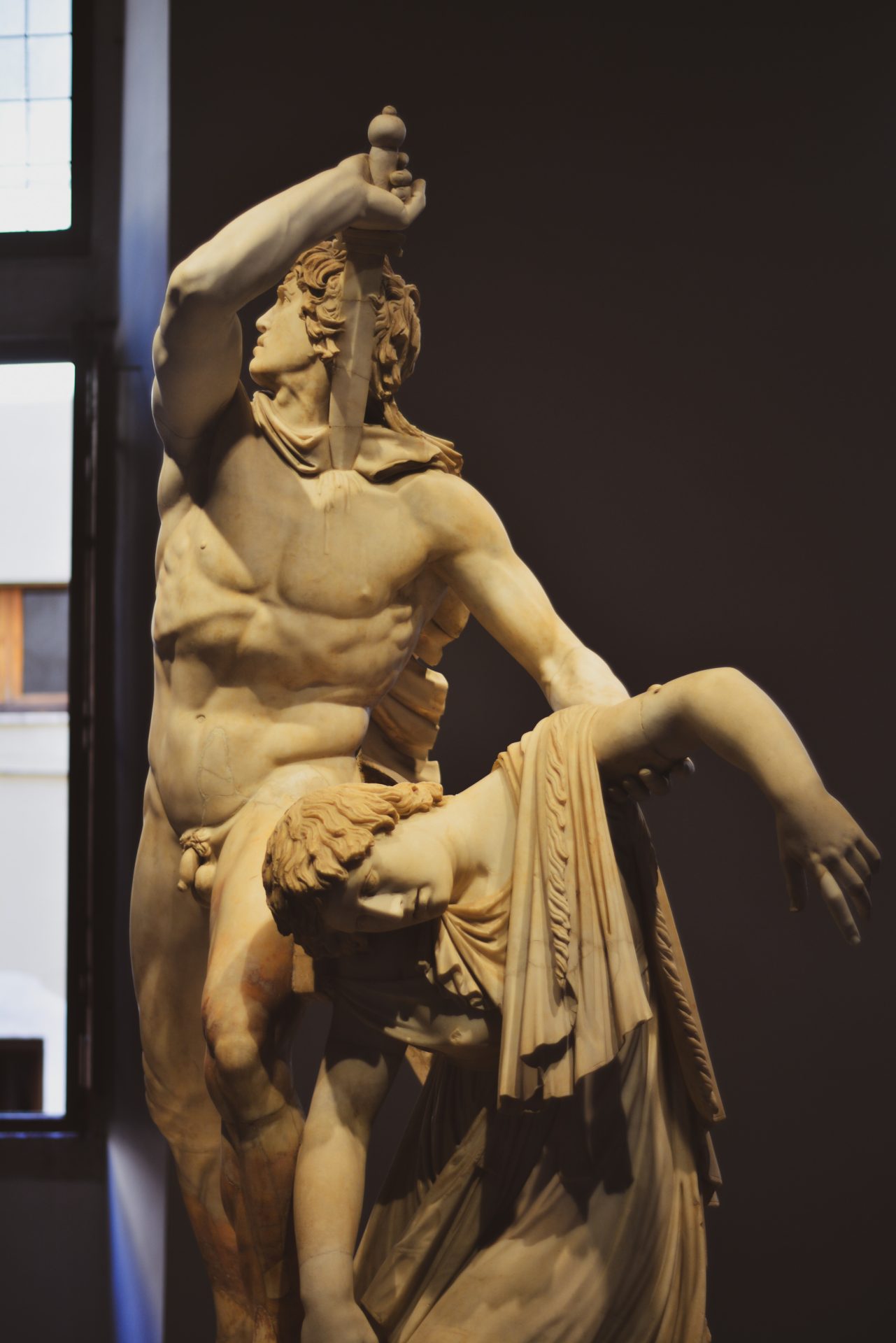
It was a shame for Franko and Hrushevsky to see the holes in the Colosseum and the buildings, destroyed and vandalized in search of metal. The former Flavian amphitheater evoked silence and tranquility in the travelers and they struggled to imagine that the tribunes had once been filled with a dazed audience, stage soaked in blood. Now everything evaporated and grew over with moss, and time, as Hrushevsky wrote, brought not only oblivion but also peace.
In a more detailed manner, Mykhailo Hrushevsky wrote about his Italian impressions in his series “Around the World”. Although he did not intend to make the notes informative, the scholar’s persona appears on the pages more frequently than that of an ordinary witness – and in the midst of simple-minded contemplation one can notice the thorough knowledge of a man who drank the full cup of “classical education” and retained a certain sentiment for it.
Forum Romanum gave him the impression of an open grave of republican Rome, a kind of cemetery made of the remains of columns, stairs, and temples. It’s important to pay attention to the column of Foca from the year 608, to the barely preserved Via Sacra and the old Cloaca Maxima, which “proved to be more durable than magnificent buildings, luxurious monuments and memorable statues.”
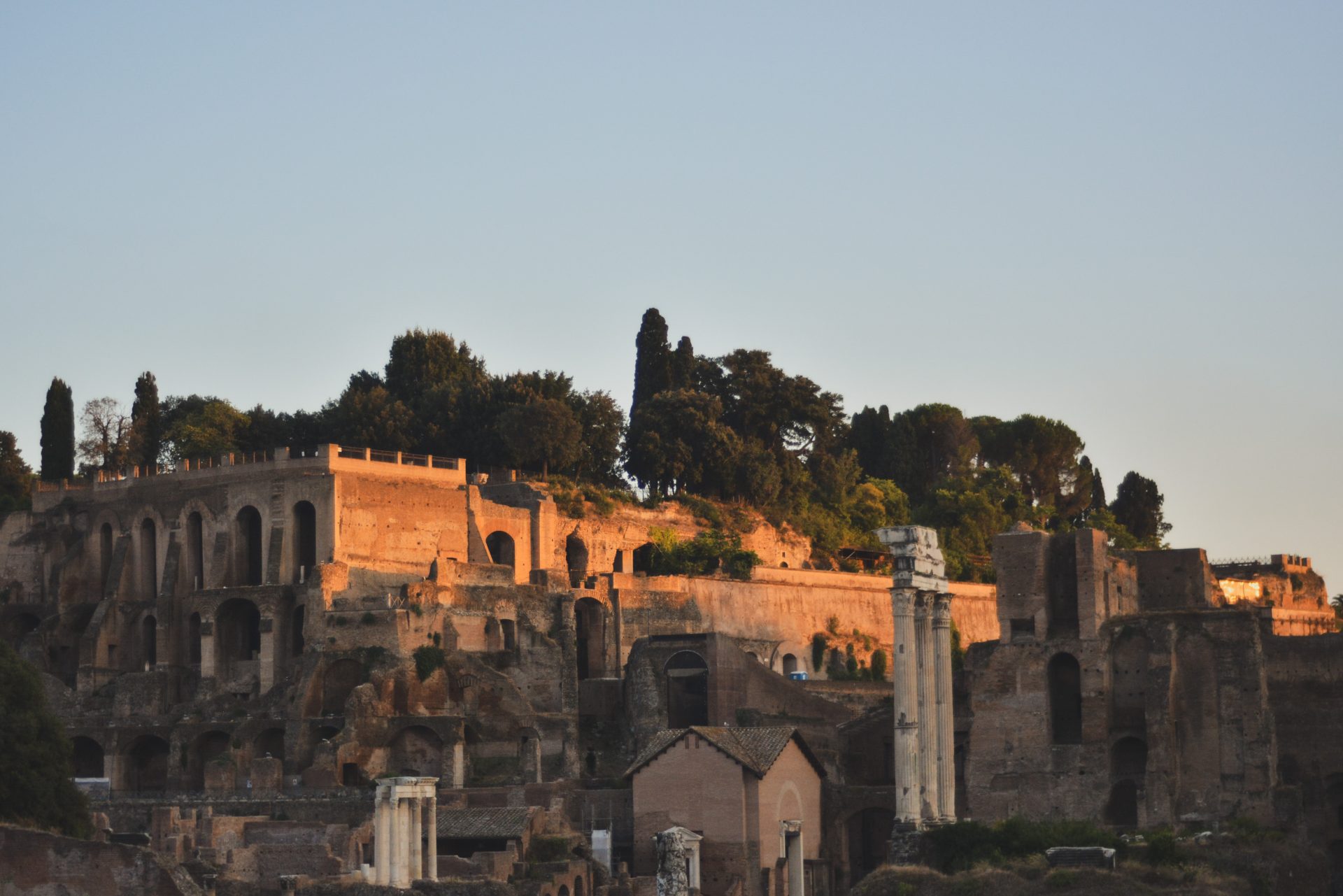
If you want to look at something not too destroyed, go to the Pantheon and enjoy the old rotunda of the Temple of Heaven, or follow in the footsteps of Christianity and visit the catacombs, created because it was forbidden to bury the dead in the city (according to pagan beliefs, the remains profaned the space), prompting the Roman Christians to begin to do so in caves and dungeons outside the city walls.
If you happen to be in Rome during the Holy Week, be sure to attend a church mass , because the singing and rituals encourage not only piety but also beauty. Following the example of Hrushevsky, fast for at least two days and go to the first Ukrainian church in Italy, Santi Sergio e Bacco, with a clear mind on Easter. It will be the quintessence of Roman-Ukrainian beauty.
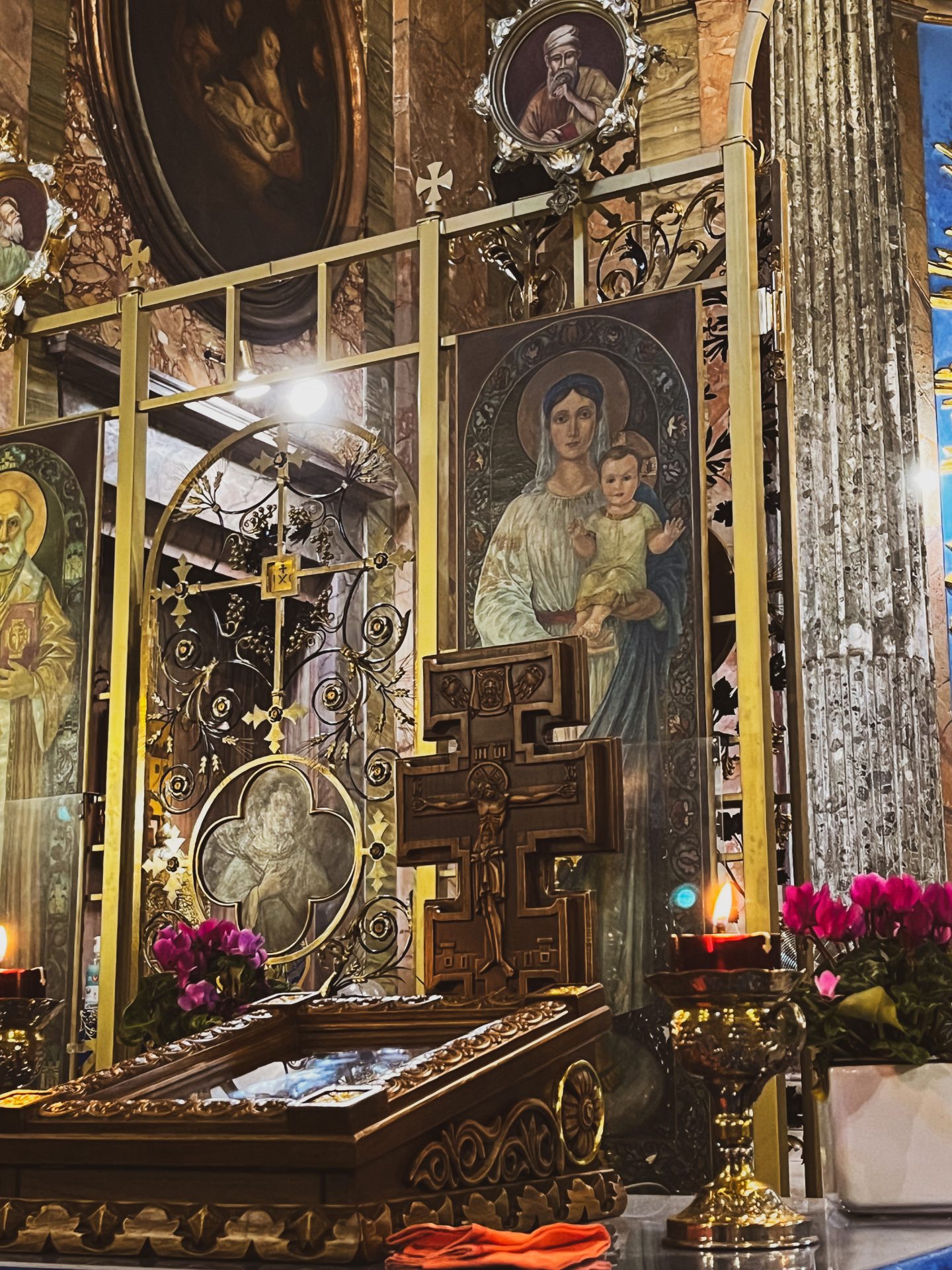
And while the cicadas chirp in exotic trees and the smallest antique fragments radiate with the warmth of the blazing sun, it is good to think that every wanderer who follows the routes of Ukrainian Сicerones who came before them continues the good tradition of Ukrainian travel.
Photo by Olha-Yulita Pogoreliak
Translation: Anastasiia Marchenko
Copy editing: Olena Pankevych
This publication is sponsored by the Chytomo’s Patreon community
що більше читаєш – то ширші можливості



